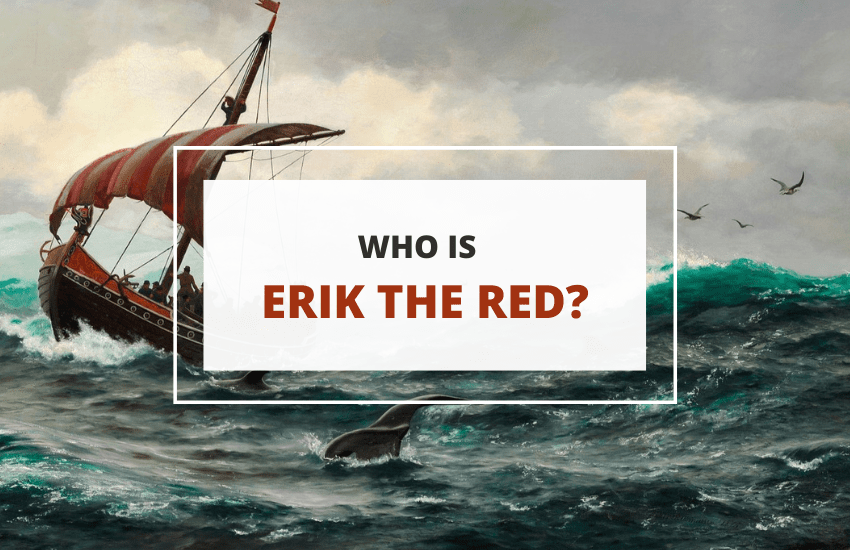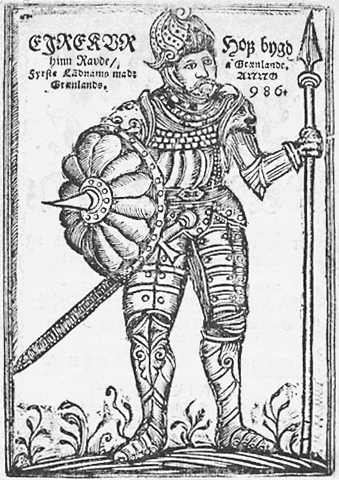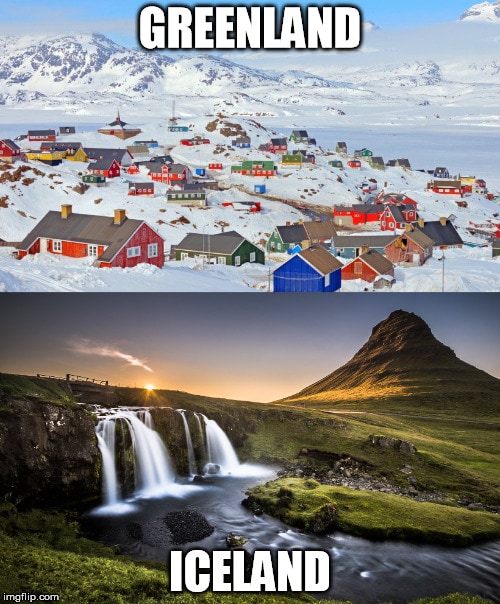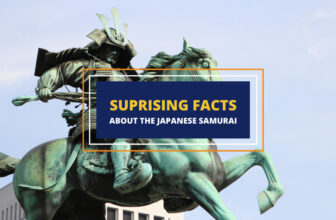
Erik Thorvaldsson, or Erik the Red, is one of the most legendary and historically pivotal Norse explorers. A discoverer of Greenland and the father of Leif Erikson – the first European to set foot in America – Erik the Red lived a storied and adventurous life in the late 10th century.
However, how much of what we know about Erik the Red is true, and how much is simply legend? Let’s try to part fact from fiction below.
Erik the Red – Early Life

Erik Thorvaldsson was born in 950 AD in Rogaland, Norway. He didn’t live in Norway for long, as just 10 years later his father, Thorvald Asvaldson was exiled from Norway for manslaughter. So, Thorvald took off to Iceland together with Erik and the rest of their family. There, they settled in Hornstrandir, on the northwestern side of Iceland.
Erik the Red – so named likely because of his red hair – grew into a man in Iceland and eventually married Þjódhild Jorundsdottir and moved with her to Haukadalr, and together the two built a farm they called Eiríksstaðir. The couple had four children – a daughter named Freydís and three sons, Thorvald, Thorstein, and the famous explorer Leif Erikson.
Before Leif could follow in Erik’s footsteps, however, Erik first had to follow in his own father’s footsteps. This happened around 982 AD when Erik was in his early thirties and committed manslaughter in Haukadalr. The accident seems to have occurred due to a territorial dispute with one of Erik’s neighbors – Erik’s farm slaves (or thralls) caused a landslide into Erik’s neighbor’s farm, the neighbor got people to kill Erik’s thralls, Erik retaliated in kind, and it wasn’t long before Erik was exiled from Iceland just as his father was exiled from Norway.
Erik tried to resettle on the island of Eyxney but further conflicts eventually forced him to take to the sea and sail further northwest into the unknown with his family.
Greenland – First Contact
It’s not clear exactly how “unknown” Greenland was to the Nordic people before Erik the Red discovered it officially. There is speculation that Vikings had been to the large landmass as far as a century before Erik. Both Gunnbjörn Ulfsson (or Gunnbjörn Ulf-Krakuson) and Snæbjörn Galti Hólmsteinsson seem to have been to Greenland before Erik the Red so the people of Iceland must have known that there was land in that direction. This would explain why Erik took off with his whole family and kids to the Northwest instead of toward literally any other part of Europe.
Why does history credit Erik the Red as the first settler of Greenland then?
Because he was the first who managed to settle in it. Gunnbjörn Ulfsson’s trip over the ocean century earlier resulted in him “sighting” the landmass but he doesn’t seem to have even attempted to settle it.
Galti, on the other hand, had made a proper attempt to settle Greenland in 978 AD, just a few years before Erik the Red, but he failed. Both explorers are commemorated in Greenland to this day for paving the way for Erik the Red, but it’s the latter who finally managed to create a lasting European presence on the northern island.
Settling the Land
Erik used his 3-year-long exile to fully circle Greenland and explore its coastline. He first circled the southern-most edge of Greenland which was later named Cape Farewell on Egger Island. He and his family then settled on a small island at the mouth of the Eriksfjord river, today known as Tunulliarfik Fjord.
From there, he and his men spent the next two years circling Greenland around its west coastline, then from the north and back south. He named every little island, cape, and river he encountered along the way, effectively marking the island as his discovery. He spent his first winter there on the island he named Eiriksey and the second winter – near Eiriksholmar. By the time Erik was back to his family at the southern-most edge of Greenland, his 3-year exile was already coming to an end.
Instead of just going back to his family, Erik decided to use the end of his exile to return to Iceland and spread the word about his discovery. Once he returned, he dubbed the land “Greenland” in an attempt to contrast it to Iceland and tempt as many people as possible to come with him.

This “branding” stunt was indeed successful as 25 ships sailed with him from Iceland back to Greenland. Many of the people who accepted his promise were people who had suffered from a recent famine in Iceland and lived in poor parts of the land. Despite this initially promising start of the campaign, however, not all 25 ships traversed the Atlantic successfully – only 14 made it across.
Erik returned to Greenland in 985 AD with a still fairly large number of colonists. Together, they started two colonies on the southern coast of Greenland – one Eastern Settlement called Eystribyggð, present-day Qaqortoq, and one Western Settlement that’s not far from today’s Nuuk.
Unfortunately for Erik and his settlers, those two settlements were the only places on the island suitable for farming and the establishment of large colonies – suffice it to say that “Greenland” wasn’t the most accurate name he could have chosen. Still, the settlements were relatively stable and grew in size from numbering a few hundred people in total to about 3,000 people.
The settlers farmed year-round and also spent the summers hunting by boat in the Disko Bay, just above the Arctic Circle. There, they managed to catch fish for food, seals for rope, and walruses for the ivory in their tusks. They would also catch the occasional beached whale.
Erik’s Eventual Death

Erik lived out the rest of his life in Greenland, erecting his estate Brattahlíð in the Eastern Settlement. He lived there for 18 years between 985 to 1003 when he eventually died of an epidemic. By that time, his son Leif Erikson had already started exploring, but his father had chosen not to join him.
Ironically, Erik is said to have wanted to sail west with Leif but chose not to after he fell off his horse on the way to the boat. Erik took this as a bad sign and decided at the last moment to stay with his wife instead. This would be the last time he saw Leif as the epidemic took Erik before Leif could return and tell his father about his own discoveries.
Today, we can piece together the lives of Erik and Leif, as well as of their colonies in the several Sagas written about them such as the Saga of Erik the Red and the Greenland Saga.
The Colony’s Difficult Life And Erik’s Legacy

The same epidemic that took Erik’s life was brought over by the second wave of emigrants from Iceland. This event marked a fitting start to the life of Icelandic settlers in Greenland as the next few centuries would prove to be quite difficult for all of them.
Life in Greenland continued to be rough due to the harsh climate, limited food and resources, pirate raids gradually increasing in frequency, and conflicts with Inuit tribes that moved south into the territories of Erik’s Vikings. Eventually, a period dubbed “the Little Ice Age” hit in 1492 and brought the already low temperatures further down. This finally brought Erik’s colony to an end and those who survived sailed back to Europe.
Despite this grim end, Erik’s legacy is quite significant. His colony in Greenland lasted for five whole centuries despite the difficult conditions and by the time the Norse people abandoned it, Christofor Columbus was just then discovering America “for the first time”. It happened in the exact same year, in fact, in 1492 – more than 500 years after Erik the Red discovered Greenland and Leif Erikson discovered North America.








